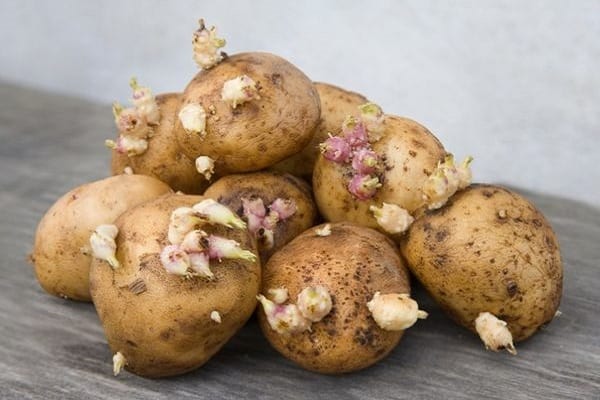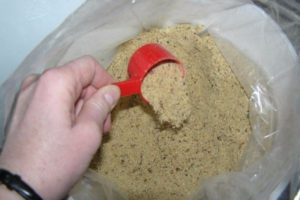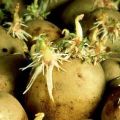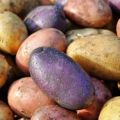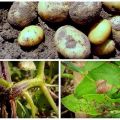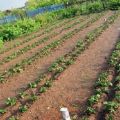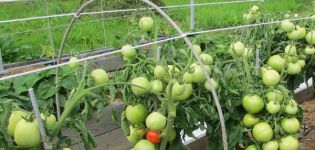Description and treatment of potato scab (rhizoctonia), modern control measures
Potato scab is a generalized name for fungal diseases that mainly affect the surface potato tubers.
The infection is divided into several types:
- potato rhizoctonia (black scab);
- powdery scab;
- common scab;
- lumpy scab (oosporosis)
- the scab is silvery.
Fungal Damage:
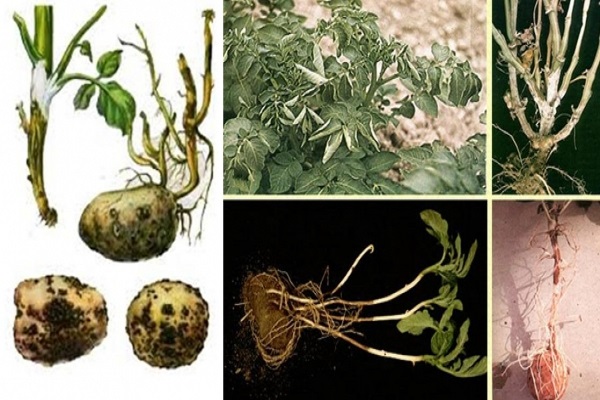
- potatoes lose their presentation;
- the amount of waste during cleaning increases;
- yield decreases;
- keeping quality decreases;
- worse taste and nutritional qualities;
- tubers are not suitable for planting;
- the infected areas are unsuitable for growing any vegetables of the nightshade family;
- in severe cases, young potato seedlings die.

Black scab (rhizoctonia)
Rhizoctonia is considered one of the most dangerous types of potato scab. She is excited by the mushroom Hypochnus solani Prill. et Delacr. In the basidial stage, it develops on the stems of potatoes, this disease is called the white leg. Infected plants have a characteristic off-white coating, film-coating the lower parts of the stems. For the active growth of the fungus, high humidity and warm weather are required.
More often this mushroom is in the stage of the imperfect fungus Rhizoctonia solani J.G. Kuhn, from which the second name of the disease of potato rhizoctonia was taken.

Rhizoctonia symptoms
Infected tubers are covered with black sclerotia, similar to dried soil particles. These formations are difficult to tear off with a fingernail and they are not washed off. In this form, the mushroom hibernates on potatoes without causing significant harm.

If infected tubers are used as seed material, young seedlings will be ruined.
Once in moist soil, the sclerotia of the fungus sprout with mycelium directly into the shoots. Often, the plant dies even before it leaves the soil. The disease is especially serious when diseased tubers are planted in poorly heated soil.
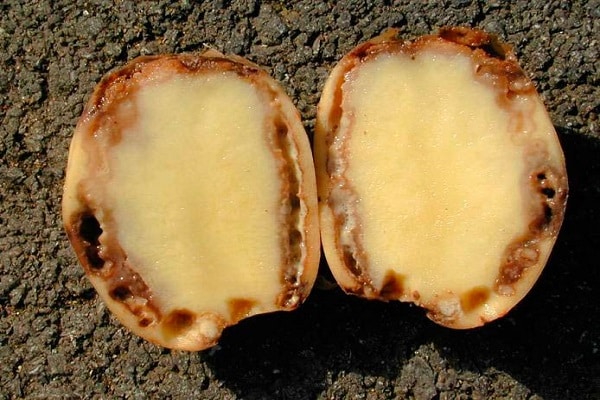
Sprouted infected stems are encircled in the lower part with dark, depressed spots.
In the axils of the leaves, airy nodules of green color begin to grow.
Sick plants noticeably lag behind in growth, have withered foliage.

Conditions for active growth of infection
The most comfortable temperature for the development of black rot is 16-18 degrees. If it is accompanied by high humidity (60–70% of the full moisture capacity), the fungus grows rapidly and destroys young shoots.
Heavy loamy soils are primarily at risk of disease. Potato black scab prefers neutral soils, but can develop in the pH range 4.5–8.
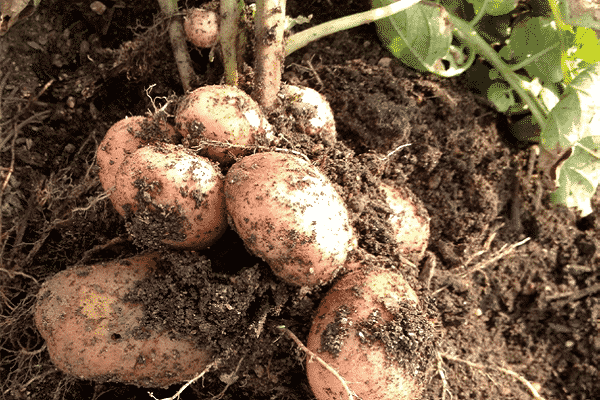
In the ground, rhizoctoniae can be dormant for up to 3-4 years. Compliance with crop rotation is complicated by the possibility of contamination of other crops with this fungus. (carrots, tomatoes, sugar beets, pumpkin and others).
How to deal with scab on potatoes?
The main way to combat rhizoctonia is its prevention. It is already difficult to do something with diseased seedlings; it is easier to remove diseased plants to prevent the spread of the disease. You can get rid of scab on potatoes only by taking preventive measures:
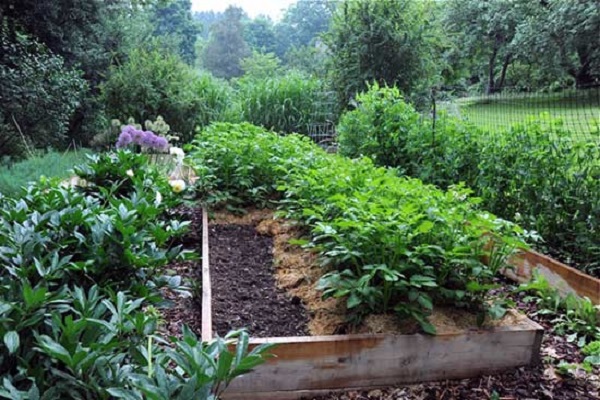
- When choosing seed, you need to make sure that there are no signs of disease on it.
- Treat planting tubers with fungicides (Baktofit, Planriz, Integral, Fenoram, Maxim and others).
- The site for planting potatoes should be "rested" from the nightshade family for 3-4 years. It is ideal if flax, winter rapeseed, perennial grasses, grain crops were grown on it.
- Planting potatoes should receive timely fertilizing with mineral and organic fertilizers.
- It is best to avoid very early planting dates.
- A week before harvesting potatoes, it is better to remove the tops and remove them outside the territory of the site.
- Do not delay harvesting. Choose warm, dry weather 6-7 days after haulm removal.

Powdered scab (dusty)
The causative agent of the disease Spongospora subterranea Wallr belongs to the lower fungi. In a free state, it is an amoeba-like clot of protoplasm that moves in the upper layers of the soil in search of plants. The parasite enters the root cells and grows in them.

Conditions for active growth of infection
Powdery scab grows best in peat soils. The slime mold can only move in very wet soil, more than 70% of the full moisture capacity. If the soil dries up, the amoeboid becomes coated and forms a cyst. In this form, pseudo-mushrooms can be for several years. A temperature of 12-18 degrees is optimal for development.
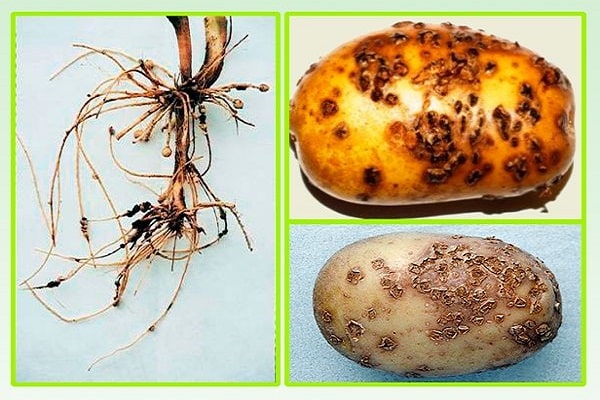
Symptoms
The slime mold infects the tubers, roots and stolons of the potato bush.
When the roots are infected, the fungus forms light, irregular growths called galls. Gauls turn brown over time.
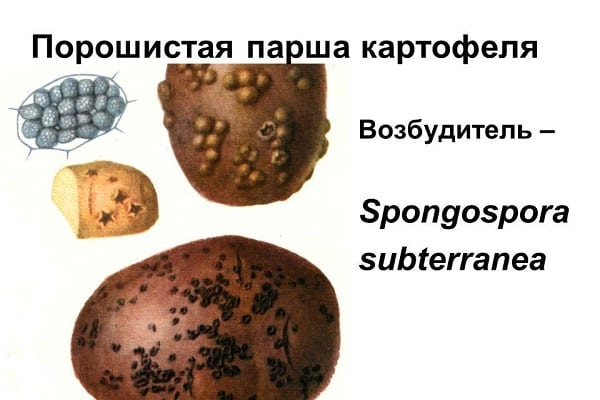
The slime mold attacks tubers through the eyes and lentils, forming light-colored pustules. Then the spots become larger and more prominent. The surface of the pustules is cracked and you can see dust containing spores. The keeping quality of the tubers affected by scab of potatoes is poor, often secondary infections (late blight and dry rot) join at the site of damage.
Sources of infection
In soil, powdery scab usually hibernates on the remains of roots and tubers, as well as in the form of dormant spores. In this state, the fungus can last up to 3-4 years, until favorable conditions come.
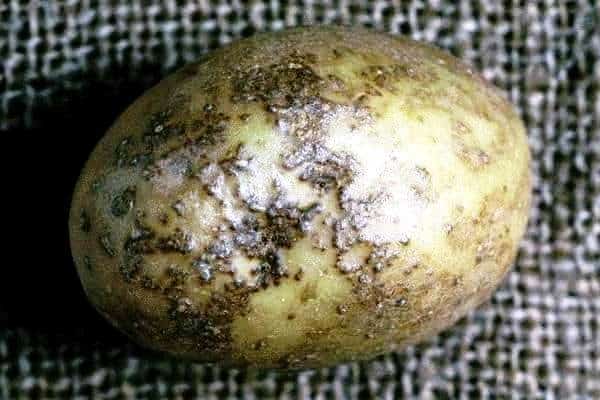
Basic steps to prevent infection:
- observe the correct crop rotation;
- choose only healthy planting material;
- treat seed tubers with fungicides;
- do not overmoisten the soil, especially on cool days;
- select disease-resistant varieties.
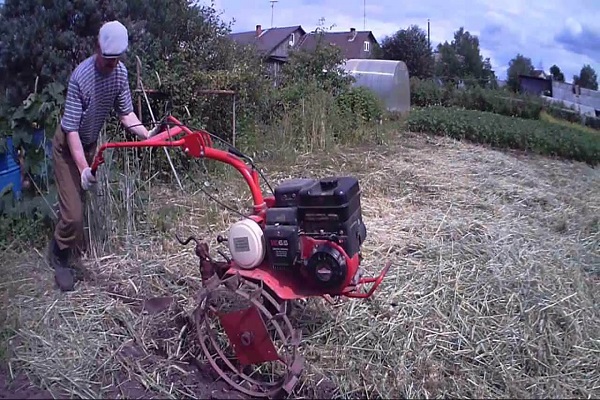
Common scab
Common scab is caused by several species of fungi of the genus Streptomyces. The description of the disease is known to any vegetable grower, infected tubers become covered with ulcers, which gradually increase in size. Over time, the ulcers deepen and become corky. The common scab especially "loves" red and thin-crust varieties. Tubers damaged by ulcers are easily exposed to secondary infections of various rot.

Conditions for active growth of infection
Ordinary potato scab loves well heated (25-30 degrees), not very moist (50-70%), slightly alkaline or neutral soil (pH 6-7.5). Common scab, like other fungal diseases, is easier to prevent than cure.
If you increase watering during the formation and growth of tubers, you can significantly stop the development of this fungus.

Control measures:
- selection of only healthy tubers for planting, possibly with inherent varietal resistance to the disease;
- do presowing germination of tubers in the light and dressing with fungicides (nitrafen, polycarbacin and others);
- the use of green manure (mustard, lupine, alfalfa, soybeans) and compliance with crop rotation;
- full watering during the growth of tubers (moisture content 75–85%);
- thorough cleaning of the soil from all potato residues;
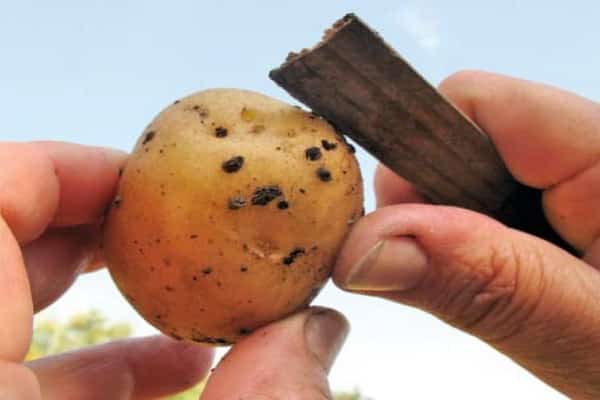
Silvery scab
A frequent uninvited guest on the tubers is the silvery scab of potatoes. The causative agent of the disease is the mushroom Helminthosporium solani. This disease grows in the skin of the tubers and usually becomes noticeable only after 3-4 months of storage. Slightly depressed silvery spots appear on the potato.
Diseased tubers:
- exposed to secondary infections through the damaged surface;
- have a poor presentation;
- give weak shoots and sparse shoots.

Diseased tubers and contaminated soil can become a source of infection. At high humidity and high temperatures, scab on potatoes grows very quickly.
How can you deal with scab on potatoes:
- pickling planting tubers with fungicides (Maxim, Celest, Nitrofen) even before being sent for winter storage;
- selection of only healthy seed tubers;
- sending well-dried potatoes for storage;
- the presence of ventilation, maintenance of temperature (+ 2 ... 3 degrees) and low humidity during storage;
- observe the principles of crop rotation.

Lumpy scab (oosporosis)
The infection is caused by the mushrooms Oospora pustulans Owen. The disease spreads through the eyes, mechanical damage and lentils. The disease is not immediately visible, it manifests itself closer to spring. Small brown tubercles form on the tubers, each of which has a depressed border. Sometimes the tubercles merge into large growths.
Sod-podzolic sandy soils are at risk. The disease is rare in peat bog soils.
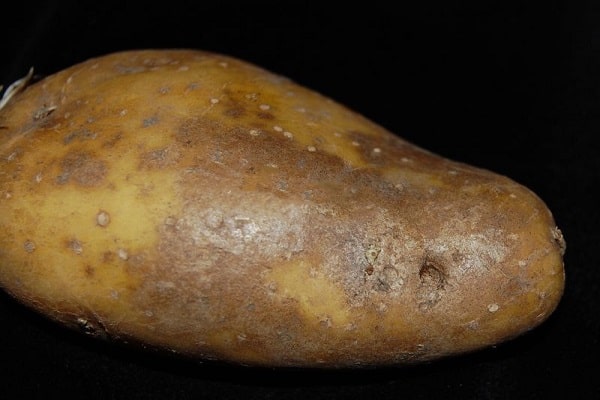
The development of the fungus is stimulated by a soil temperature of 11-12 degrees.
Treatment for oosporosis is the same as for silver scab.
